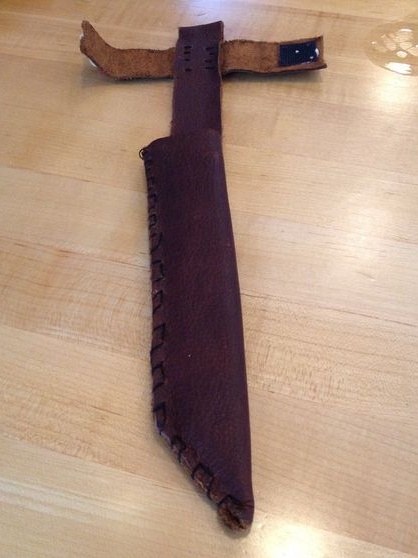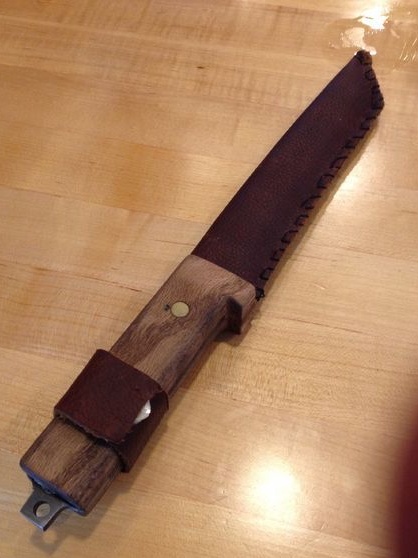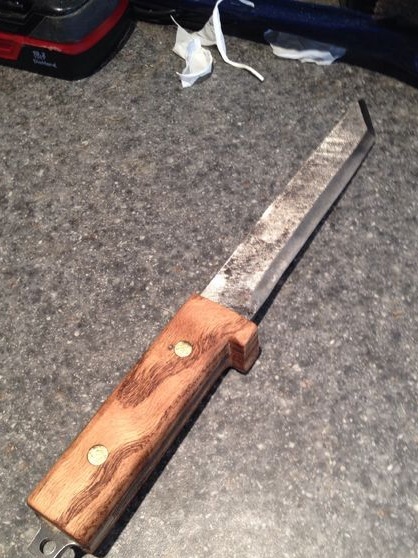
In this example, we will consider a method of manufacturing the simplest, but very strong and reliable knife. It is made from a file, and it is probably a file for metal processing, as small cloves are visible in the photo. But that is not the point.
In addition to excellent steel for the knife, the file has an almost ready-made blade profile. A made knife will be good for domestic needs and other purposes. They can cut wire, wood, plastic and other solids and not be afraid that the blade will become dull right away, because this is after all a “file”!
Materials and tools for homemade:
- file;
- ;
- orbital sander;
- coal or other heat source;
- wood for the manufacture of pads on handles;
- ;
- brass rods for the manufacture of pins;
- epoxy adhesive;
- different grit sandpaper;
- vise;
- files for metal;
- (not necessary);
- thick leather and sewing accessories for the manufacture of scabbard;
- linseed oil or other impregnation for wood.
The process of making a knife:
Step one. We form a blade profile
First of all, we cut out the main profile, including the formation of bevels. You can specify any form you like, but I’ll immediately note that the author works with metal without tempering steel, which means that the processing will be carried out with an electric tool. Using a grinder or other tool, carefully cut off the excess depending on the desired profile.
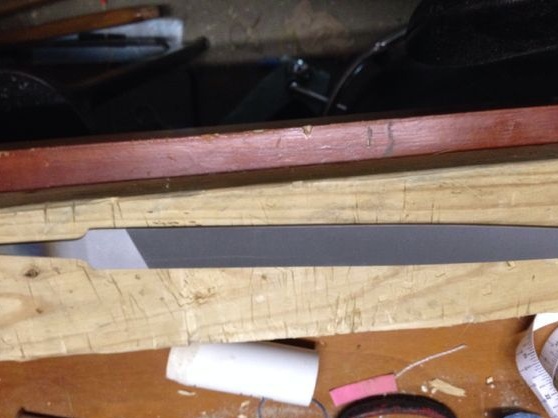
Now you need to form the bevels of the blade. They will affect the cutting characteristics of the knife. The wider the bevel, the correspondingly the thinner the blade will be, which means that the knife will cut well. But do not overdo it and do not make the blade too thin, as it will not have high strength.
Treat the surface of the file with sandpaper or the same grinder. You can bring the steel to a mirror finish if required. But do not sharpen the blade too much, as during hardening the metal can deform, and the thin part can overheat too much.
Step Two Quenching and vacation
Despite the fact that the file metal is already hardened, the author still does a re-hardening. Many friends believe that reheating allows you to remove the internal stresses of the metal that are formed after machining. We heat the workpiece in coals to a yellow glow. If the metal is heated to the desired temperature, a permanent magnet will not be attracted to it. Having reached the desired temperature, we cool steel in oil, you can use motor or mineral.
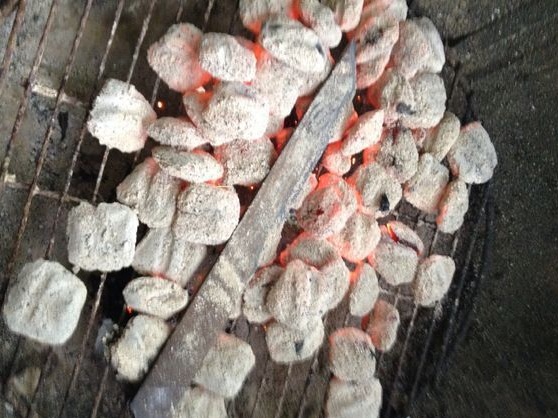
After quenching, a “vacation" of metal is necessarily done, this allows you to make the workpiece more springy. Otherwise, the knife will be very fragile, and the metal will fly to pieces if the knife falls. For a vacation you will need an ordinary household oven, preheat it to a temperature of 200-220 degrees Celsius and put the workpiece for an hour. Allow the oven to cool with the blade without opening the door. After this vacation can be considered over.
Step Three Sharpen the knife
After hardening, we clean the knife from oil deposits, scale and other things. Here you can use sandpaper and other means. Now it can be sharpened, for this the author uses a file. However, this method is doubtful, because a file is unlikely to be ground with a file. Here you can use grindstones, in particular Japanese water stone. In the worst case, sandpaper works fine.
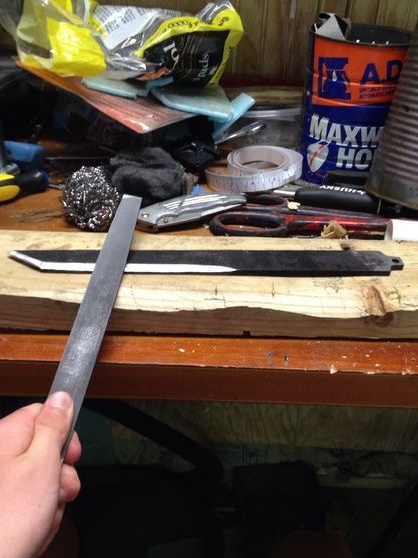
Step Four Set the pads on the handle
As for the finish of the handle, then you need wood, but you can use horns, bone roots, and so on. Cut the workpieces to fit the size and stick to the blade shank. It will also be necessary to use pins, for this, however, it is necessary to drill holes in the metal, which is not so simple. We assemble the handle on epoxy glue and clamp it with a clamp for a day.
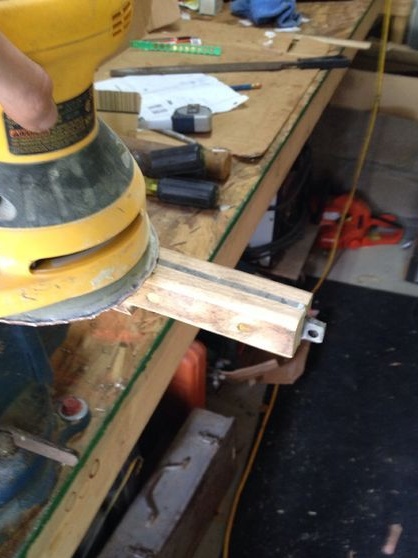
When the glue dries, proceed to grinding the handle. Rough work can be done with files, then we use sandpaper from the largest to the smallest. The easiest way to work here is on a belt sander.
Step Five Impregnate the handle
Wood must be protected from moisture, as it quickly skews from moisture changes. For impregnation we use linseed oil or other impregnations.
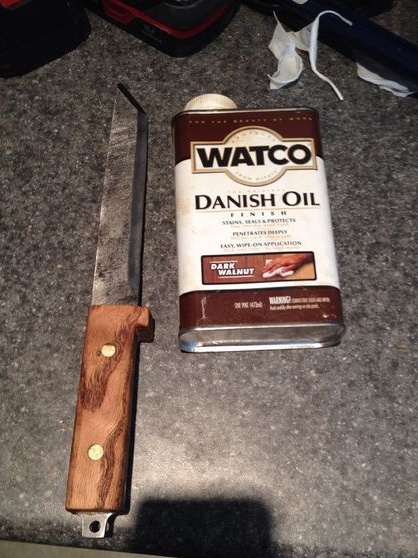
Step Six Completion. Make the scabbard
That's all, the knife is ready. Finally, scabbard for him. You will need thick leather, thread, scissors and a sewing needle. That's all, now carrying a knife is also safe!
